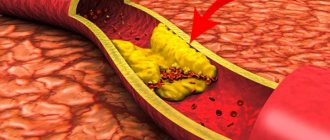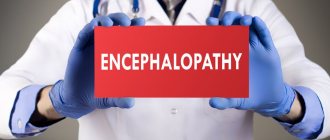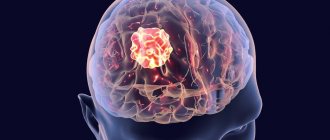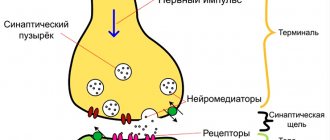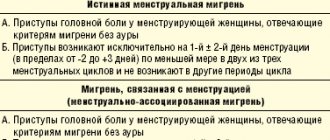Home — For the public
- Map of medical organizations
- Vaccination
- Clinical examination
- Fluorography
- Addresses and opening hours of clinics
- Emergency rooms
- Oncology
- Where to take an HIV test
- Healthy child's office
- Services
- Prevention of CVD
- Disease Prevention
- World Patient Safety Day
- Newspaper "Medical News"
- specialist
- School of Health
— Disease prevention
- HIV infection
- All about vaccination
- All about proper nutrition
- Hepatitis
- Flu
- Dementia
- Schoolchildren's health
- STD
- Tick-borne encephalitis
- Whooping cough
- Measles
- Legionellosis
- Meningococcal infection
- Oncology
- Acute intestinal infection
- Pediculosis
- First aid
- Pneumococcal infection
- Pneumonia
- Prevention of rabies
- Dependency Prevention
- Rotavirus infection
- Diabetes
- Cardiovascular diseases
- Injuries
- Tuberculosis
- Tularemia
- Physical activity
- Obstructive pulmonary disease
- Exotic infections
- Ecology
- Why is swimming in ponds dangerous?
— Cardiovascular diseases — Vascular diseases of the brain
Even at rest, the human brain consumes up to 25% of the oxygen entering the body; To ensure its operation, about 15% of the total volume of circulating blood is required. Vascular diseases, narrowing of their lumen leads to hypoxia and neuron death.
People without special education cannot always recognize the first symptoms of cerebrovascular accident and miss the time when therapeutic or preventive care is most effective.
Blood supply to the brain
Four large arteries are responsible for the transport of oxygen and nutrients to the brain tissues: two internal carotid and two vertebral. The vertebral arteries are responsible for supplying blood to the brain stem. At the base of the brain they merge into the basilar artery.
Each internal carotid artery is divided into anterior and posterior. These vessels supply the frontal, temporal, parietal, and occipital lobes.
At the base of the brain, the internal carotid branches, the basilar artery and the branches connecting them form a closed circle of Willis. It is named after the English doctor Thomas Willis. This anatomical formation ensures the redistribution of blood and the preservation of nutrition of parts of the brain during blockage of blood vessels. The outflow of blood from the cranial cavity occurs through the jugular veins.
Brain diseases occur when large and small vessels are damaged. Depending on the cause, symptoms occur acutely and require immediate medical attention or develop gradually, slowly leading to a deterioration in a person's quality of life.
The main causes of arterial damage include atherosclerosis and hypertension. In the first case, plaques form on the inner surface of the vascular wall, narrowing the lumen of the arteries. They have a thin cover and contain lipids inside. When such plaques rupture, blood platelets adhere to the damaged surface, leading to blockage of the lumen (thrombosis). The provoking factor is often vasospasm.
Arterial hypertension also damages the walls of blood vessels: they become denser, and areas of expansion (aneurysms) appear. These vulnerabilities can cause arteries to rupture or become blocked.
A condition in which small cerebral arteries are affected and the blood supply to the brain is affected is called discirculatory encephalopathy. Nerve cells do not receive enough oxygen and nutrients and die. A developed network of arteries cannot solve this problem. The process is not limited to any one area of the brain; lesions are found in various parts.
Atherosclerosis of the coronary arteries
Atherosclerosis of the coronary arteries (which bring blood to the tissues of the heart) is one of the main causes of coronary heart disease and myocardial infarction: when the disease affects the vessels of the heart, heart muscle cells begin to die due to insufficient nutrition. And the risk of blood clot formation and vessel blockage only aggravates the situation. This condition is extremely dangerous, life-threatening and requires consultation with a doctor. You should pay special attention to possible symptoms:
- chest pain;
- feeling of heaviness, tightness in the chest;
- arrhythmia, i.e. fast or slow heartbeat;
- feeling of a sinking heart.
Do not underestimate the above symptoms. Let us remember that the risk of developing atherosclerosis is present in many people. Complications of the disease without proper treatment are so dangerous that you should consult a doctor, even if you are afraid of a confirmed diagnosis or surgery. Modern medicine has advanced far in the treatment of atherosclerosis of various localizations.
Risk factors for cerebrovascular diseases
Assessing the likelihood of vascular damage, neurologists and cardiologists say that some people are more predisposed to this group of diseases. Risk factors include such conditions, diseases and lifestyle features as:
- low physical activity;
- hypertonic disease;
- heart disease;
- diabetes mellitus of any type;
- hypercholesterolemia;
- smoking;
- regular stress, psycho-emotional stress;
- frequent drinking of alcohol.
In addition, the risk group includes people with a family history of hypertension, heart attack, stroke in close relatives.
Fats
Fats (primarily of animal origin) increase the amount of low-density lipoproteins (LDL), triglycerides and cholesterol in the blood, and arterial plaques form.
Cardiologists recommend limiting your daily intake of animal fats if you have high cholesterol levels or avoiding them as much as possible if you have diabetes or heart disease.
The best option is to replace them with healthy fats of plant origin - flaxseed oil, olive oil.
First of all, this concerns:
- fat milk, sour cream and cream,
- fatty varieties of cheese,
- butter,
- fatty meats (lamb, pork),
- sausages, lard and other smoked meats and pickles,
- canned food, stewed meat, ham, etc.
Symptoms
The first signs of vascular damage to the brain may appear already at a young, working age. In this case, patients tend to ignore painful symptoms and not consult a doctor. And even when visiting a therapist or neurologist, the condition often remains unrecognized.
Among the early signs:
- absentmindedness;
- memory loss;
- fatigue;
- decreased performance;
- headache;
- noise in the head;
- episodes of dizziness;
- weather sensitivity.
Signs of circulatory problems may appear one by one. Young patients often associate them with overwork, as they believe that it is too early for them to be sick.
Over time, negative lifestyle factors lead to a deterioration of the condition - normal activities begin to suffer, severe weather sensitivity worries, and a person’s character “deteriorates.”
But sometimes the situation changes dramatically. In such cases, they speak of acute cerebrovascular accidents. How to recognize typical vascular diseases?
Encephalopathy
This diagnosis has already become “the talk of the town”: it is used to scare patients with hypertension, and it is “gifted” to old women who make scandals in pharmacies, clinics and on the street. And no wonder. The first symptoms of the disease are often noticeable behavioral, emotional and volitional disturbances. Thus, patients experience:
- irritability;
- emotional lability;
- sleep disorders;
- fatigue;
- depressive symptoms.
Relatives may notice that such a relative has become angry, sensitive to changes in weather, and his personality traits have become “sharpened.” Sentimental people become whiny, punctual people become pedantic, thrifty people become frankly stingy.
Over time, productivity begins to suffer: memory and attention deteriorate. The person becomes absent-minded, “constantly writes down so as not to forget,” but still forgets. Episodes of inappropriate, rude behavior are possible.
Discirculatory encephalopathy progresses, the course can be uniform or with sudden episodes of deterioration. It cannot be cured, you can only slow down the development of the disease. Severe encephalopathy is characterized by the development of dementia. Such a patient has completely lost self-care skills, in some cases cannot control physiological functions, and needs constant care and supervision.
Osteochondrosis often provokes or intensifies the manifestations of encephalopathy, as it impairs blood flow to the brain due to narrowing of the lumen of the vertebral arteries. Slow personality changes due to vascular damage also occur in systemic diseases accompanied by vasculitis.
Stroke
Stroke is one of the most common causes of death in people around the world. In fact, this is an acute circulatory disorder in the cerebral vessels, in which the entire brain lesion dies. According to the mechanism of development, there are 2 types of strokes: ischemic and hemorrhagic.
In ischemic stroke, the lumen of the vessel is blocked. Brain cells are very sensitive to hypoxia. At first, they try to provide for themselves through anaerobic glycolysis; within a few hours, the pathological processes are reversible. But decay products gradually accumulate, and the pH of the tissue changes to the acidic side. Neurons swell, their membranes cease to perform their functions and are destroyed. The final formation of the stroke focus occurs within 2-7 days; specialist assistance is most effective during the first 3-6 hours.
With a hemorrhagic stroke, the integrity of the vessel is compromised. Blood pours under the membranes, into the parenchyma (tissue) of the brain, and breaks into the ventricles. The cause of such a catastrophe is changes in the structure of the vascular wall and fluctuations in blood pressure. Congenital or acquired cerebral aneurysm can cause sudden death or severe disability. Until it reaches a large size, there is no pressure on the brain, and there are no clinical manifestations. The condition may worsen acutely, the patient is concerned about:
- headache;
- nausea;
- double vision;
- convulsions;
- disturbances of consciousness.
A special place is occupied by transient ischemic attacks, or as they say - micro-strokes. The name “microstroke” is unscientific; it reflects the reversibility of what occurs in the patient’s tissues. Some people who have had ischemic attacks are not aware of this. Thus, patients are greatly surprised to learn about them when describing a routine computed tomography or magnetic resonance imaging. (“I thought it was a simple hypertensive crisis!”)
Symptoms and prognosis for cerebrovascular accidents depend on the volume and location of the lesion. It is worth recalling obvious signs, the detection of which requires immediate medical attention:
- severe headaches, often with dizziness, tinnitus;
- asymmetry of the face, it is impossible to raise your hands, smile, show your teeth;
- weakness, numbness in the arms and legs, unsteadiness of gait;
- violation of pronunciation and perception of addressed speech;
- nausea and vomiting;
- disturbance, loss of consciousness.
Features of drug treatment: recommended drugs and ointments
If you have atherosclerosis of the vessels of the lower extremities, you should contact an angiologist. The course of therapy depends on the stage at which the disease was detected.
Conservative treatment is indicated for atherosclerosis of the first and second stages. Patients are prescribed the following drugs:
- Myotropic antispasmodics. Their main effect is to eliminate vasospasm. Patients are prescribed medications Papaverine and No-shpa.
- ACE inhibitors. The purpose of these drugs is to normalize blood pressure and reduce the risk of complications from the cardiovascular system. This group includes Enalapril, Captopril, Ramipril.
- Statins. These are drugs whose action is aimed at reducing the activity of enzymes responsible for the production of cholesterol. Statins also increase the elasticity of artery walls and reduce the ability of platelets to aggregate. These drugs include Simvastatin and Atorvastatin.
- Medicines of the nicotinic acid group. Their properties include normalizing the lipid composition of the blood, stimulating the process of fat breakdown and metabolic processes in general, and reducing the load on the heart muscle. A representative of this group of drugs is Nicotinic acid in the form of an injection solution.
- Disaggregants. Such drugs improve the rheological properties of blood. This group includes the drugs Clopidogrel, Aspirin, Tiklid.
- Thrombolytics (fibrinolytics). Such medications act on a blood clot that has formed in the artery, dissolving it. This improves blood flow. Names of drugs – Streptokinase, Prourokinase, Retaplase.
When treating atherosclerosis, patients take vitamins in tablet form. Vitamins that are useful for this disease are:
- A;
- Group B (B1, B2, B3, B6, B12, B15);
- WITH;
- D;
- E.
Dietary supplements are also useful. These are not medications, but food supplements that contain useful substances and microelements. Patients with atherosclerosis need antioxidants (lecithin) and microelements (calcium, selenium, magnesium).
In addition to tablets, patients are recommended to use topical preparations (gels and ointments) with anti-inflammatory and analgesic effects. The most commonly used medications are Diclofenac (1%) and Nimid.
Diagnosis of vascular diseases of the brain
To “take care of your health and get examined,” you don’t need to wait until you reach pre-retirement or retirement age - many vascular disorders begin to develop in young people. What do we have to do? It is necessary to undergo regular preventive examinations, even if “nothing bothers you,” and do not be embarrassed to “bother” the doctor with complaints about a change in condition.
Diagnosis of cerebral vascular pathology includes:
- Analysis of patient complaints. You should tell your doctor even such “minor” symptoms as: fluctuations in blood pressure, headaches, dizziness, forgetfulness, and weather sensitivity.
- Anamnestic information: age, presence of risk factors, rate of development of symptoms, concomitant diseases (hypertension, diabetes, systemic and rheumatic lesions).
- Examination of the patient with analysis of neurological symptoms, examination of the fundus. Body mass index assessment.
- Laboratory data: blood sugar, blood lipid profile, coagulogram, platelet count assessment. CSF analysis to detect hemorrhagic stroke.
- Instrumental diagnostic methods: CT or MRI of the head, scanning of the vessels of the head and neck, ECG.
Trans fats
We are talking about artificial fat that contains partially hydrogenated oil. Trans fats improve taste and extend shelf life, but they clog your blood vessels.
Main sources: deep-fried foods, fast food, popcorn, frozen pizza, margarine, cakes, cookies and more.
How to avoid:
- Read the ingredients on the label carefully. If the words “partially hydrogenated” appear anywhere, return the item to the shelf.
- Look for healthy restaurants, don't eat fast food.
- If you still eat in a cafe or restaurant, then order steamed, grilled, baked foods.
Advantages of visiting the Medical Center for Endovascular Surgery
If you or your loved ones are faced with atherosclerosis of the lower extremities, we recommend contacting the Professor Kapranov Medical Center. This institution employs only experienced specialists - doctors of the highest category, candidates and doctors of science.
Before starting therapy, the patient undergoes a comprehensive examination: this approach will allow one to accurately determine the degree of development of the pathology and select the most appropriate treatment method.
By contacting our Center, you can:
- consult with leading experts;
- undergo a full diagnostic examination;
- cope with vascular disease by performing modern operations that guarantee results and patient safety.
If you are planning to contact the Medical Center for Endovascular Surgery and would like to receive more information about our capabilities, call the number provided for a free consultation.
Bibliography
- Consensus position of experts of the Eurasian Association of Therapists on some new mechanisms of the pathogenesis of COVID-19: focus on hemostasis, issues of blood transfusion and the blood gas transport system / G.P. Arutyunov, N.A. Koziolova, E.I. Tarlovskaya, A.G. Arutyunov, N.Yu Grigorieva, etc. // Cardiology. 2020;60(6). DOI: 10.18087/cardio.2020.5.n1132.
- Thrombophlebitis (thrombosis of superficial veins): modern standards of diagnosis and treatment / V.Yu. Bogachev, B.V. Boldin, O.V. Jenina, V.N. Lobanov//Hospital-substituting technologies: Outpatient surgery. 2016.- 3-4 (63-64)- P.16-23.
- Modern problems of thrombosis of arteries and veins / I.N. Bokarev, L.V. Popova // Practical Medicine, 2014. - No. 6 (82) – P13-17.
- Treatment of thrombophlebitis. Current recommendations and clinical practice / P.F. Kravtsov, K.V. Mazaishvili, S.M. Markin, H.M. Kurginyan // Thrombosis, hemostasis and rheology, 2020 No. 2 – P 68-72.
- Venous thrombosis: modern treatment / P.S. Laguta // Atherothrombosis, 2015 - No. 2 - P. 7-16.
- Deep vein thrombosis of the lower extremities / A.K. Lebedev, O.Yu. Kuznetsova // Russian family doctor, 2015.
- National recommendations for the diagnosis and treatment of diseases of the arteries of the lower extremities, Association of Cardiovascular Surgeons of Russia, Russian Society of Angiologists and Vascular Surgeons, Russian Society of Surgeons, Russian Society of Cardiology, Russian Association of Endocrinologists, M, 2021.
- Diagnosis and pharmacotherapy of acute venous thrombosis / N.V. Sturov, G.N. Kobylyanu// Difficult Patient, 2013., No. 12., T. 11. –P.19-22.
- Principles of management of patients with venous thromboembolism during the COVID-19 pandemic // V.Ya. Khryshchanovich // Surgery News, 2021.- t28 No. 3 – P329-338.
Author:
Baktyshev Alexey Ilyich, General Practitioner (family doctor), Ultrasound Doctor, Chief Physician
Approaches to surgical treatment for atherosclerotic lesions of the legs
If taking medications does not produce results, and also if the lesion is characterized as advanced, surgical treatment of atherosclerosis is required.
Main methods:
- Balloon angioplasty. The essence of the operation is to insert a special catheter with a small balloon into the area of narrowing and then inject pressure here by expanding the balloon. This helps restore patency. The operation is carried out under the control of a video camera and is low-traumatic. Patency of the artery after surgery is maintained for 5 years
- Shunting. This method is used if there are contraindications to balloon angioplasty. A shunt, a kind of implant that restores blood flow by bypassing the affected area, is implanted into the femoral vein. This operation is classified as complex and requires two weeks of rehabilitation after it is performed. A patient who has undergone bypass surgery must regularly take medications (anticoagulants and statins), give up bad habits and control weight.
- Endarterectomy. This is a radical operation that involves direct removal of an atherosclerotic plaque that has completely or partially blocked the lumen of the artery. It is performed under local or endotracheal anesthesia.
Patients who have undergone surgery to treat atherosclerotic disease must always control their weight so that the load on the lower extremities does not increase. To do this, you need to follow a healthy diet and avoid foods rich in “bad” fats. You also need to take medications to improve the rheological properties of the blood.
The sooner the pathology is identified and the sooner the course of treatment begins, the greater the chance of slowing its progression.
The most undesirable outcome of atherosclerosis is tissue death due to impaired blood flow and the development of gangrene. In this case, amputation is required, that is, surgical separation of the limb or part thereof. It all depends on the degree of damage and how timely the treatment process was started.
